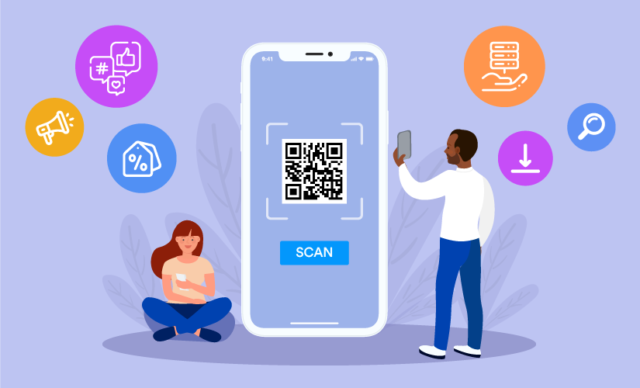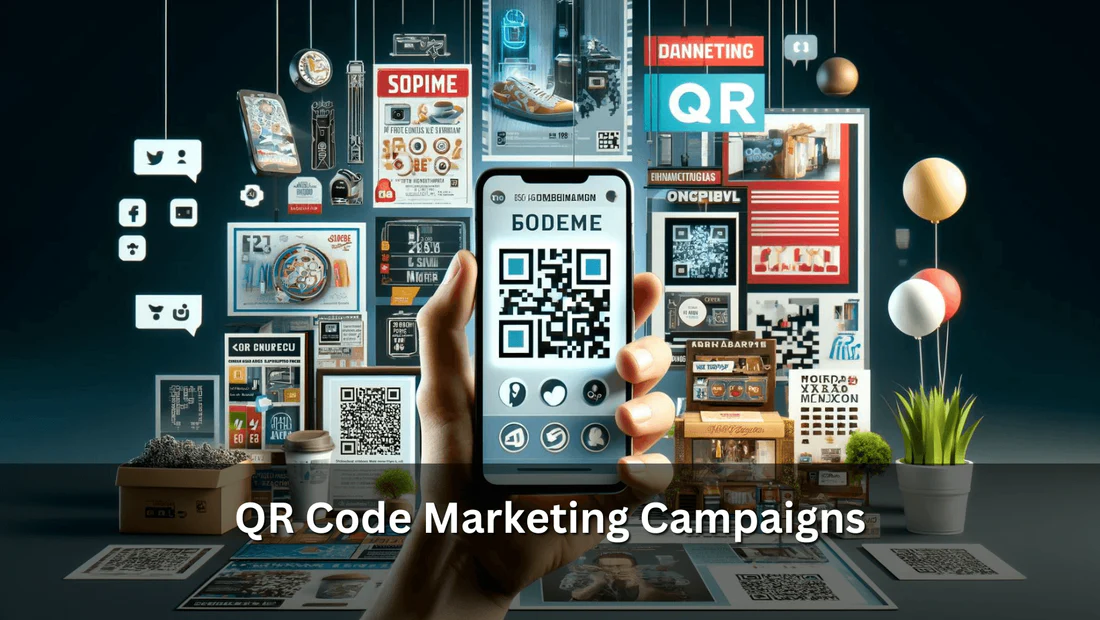In an increasingly digital world, businesses are always seeking innovative ways to engage customers and drive conversions. One such tool that has gained immense popularity is the Quick Response (QR) code. Initially developed for tracking automotive parts, QR codes have evolved into a versatile marketing tool that can connect consumers to digital content quickly and efficiently. In this blog, we’ll explore how to effectively use QR codes in your marketing campaigns and the benefits they can bring.

What Are QR Codes?
QR codes are two-dimensional barcodes that can be scanned using a smartphone camera. When scanned, they direct users to a specific URL, display text, or trigger other actions such as sending an email or making a phone call. Their ability to bridge the gap between physical and digital experiences makes them a powerful marketing tool.
1. Enhance Product Packaging
One of the most effective ways to use QR codes is by incorporating them into your product packaging. This allows customers to access additional information, promotional content, or even exclusive offers right at their fingertips.
How to Implement:
- Informative Content: Use QR codes to provide detailed product descriptions, usage instructions, or ingredient lists.
- Exclusive Offers: Encourage customers to scan the QR code to unlock special discounts or promotions related to the product.
2. Drive Engagement with Print Advertising
QR codes can enhance your print marketing materials, such as flyers, brochures, and posters. By adding a QR code, you can direct potential customers to online resources, increasing engagement and interaction.
How to Implement:
- Link to Videos: Direct users to promotional videos that showcase your product in action or tell your brand’s story.
- Landing Pages: Create dedicated landing pages that provide additional information or features related to the print ad. This can be an effective way to capture leads.
3. Streamline Event Check-Ins
For businesses hosting events, QR codes can simplify the check-in process. Attendees can scan their QR code tickets upon arrival, making the process quick and efficient.
How to Implement:
- Digital Tickets: Send QR code tickets to attendees via email. This eliminates the need for physical tickets and speeds up entry.
- Feedback Collection: After the event, use QR codes to direct attendees to a feedback survey, helping you gather insights for future events.
4. Facilitate Contactless Payments
As consumers increasingly prefer contactless transactions, QR codes can be a convenient payment method for businesses. This is particularly useful for restaurants, retail stores, and e-commerce platforms.
How to Implement:
- Payment Links: Generate a QR code that links directly to your payment portal. Customers can scan it to complete their purchase without needing physical cash or cards.
- Donation Drives: Nonprofits can use QR codes to facilitate easy donations during fundraising events.
5. Promote Social Media Engagement
QR codes can drive traffic to your social media profiles, encouraging users to follow your brand for updates, promotions, and community engagement.
How to Implement:
- Link to Profiles: Create QR codes that link directly to your social media pages. Place them on your website, business cards, and promotional materials.
- Encourage User-Generated Content: Use QR codes in physical locations to encourage customers to share their experiences on social media. This can help build a sense of community and brand loyalty.
6. Integrate with Email Campaigns
Adding QR codes to your email marketing campaigns can enhance user engagement and drive traffic to specific content.
How to Implement:
- Exclusive Content: Use QR codes to provide exclusive offers or downloadable content, such as e-books or whitepapers.
- Survey Participation: Encourage recipients to scan the QR code to participate in surveys or contests, making it easy for them to engage with your brand.
7. Track Campaign Effectiveness
One of the significant advantages of using QR codes is the ability to track their performance. By using URL shorteners or specialized QR code generators, you can gather valuable data about your campaigns.
How to Implement:
- Analytics Tracking: Monitor how many times your QR codes were scanned, which can help you evaluate the effectiveness of different campaigns.
- A/B Testing: Experiment with different QR code placements, designs, or linked content to see what resonates best with your audience.
Best Practices for Using QR Codes in Marketing
To maximize the effectiveness of your QR code marketing campaigns, consider the following best practices:
- Make It Easy to Scan: Ensure that your QR codes are large enough and placed where they can be easily scanned.
- Provide Clear Instructions: Include a short call-to-action (CTA) that explains what users can expect when they scan the code.
- Test the Codes: Always test your QR codes before launching your campaign to ensure they link to the correct content.
- Monitor and Analyze: Regularly review the data collected from QR code scans to refine and optimize your marketing strategies.
Conclusion
QR codes are a powerful tool that can enhance your marketing campaigns by bridging the gap between the physical and digital worlds. Whether you’re using them for product packaging, print advertising, or social media engagement, QR codes can help streamline processes, boost engagement, and track campaign effectiveness.


No responses yet